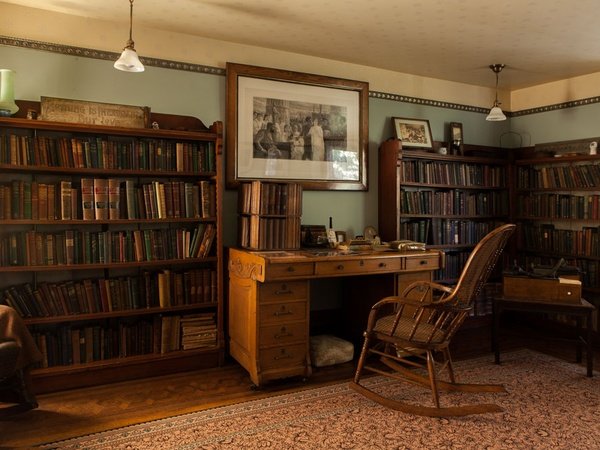Frances Willard House Museum
Established in 1900, the Frances Willard House Museum has a remarkably intact collection of original furnishings and objects, including furniture, artwork, textiles, family photographs, books, and a bicycle. Together, the house and collection tell the story of Frances Willard, one of the most prominent social reformers in 19th-century America and president of the Woman's Christian Temperance Union from 1879 to 1898.
1730 Chicago Avenue
Evanston, IL 60201
847-328-7500
Tours: Sunday, 12 p.m.
-
Picturesque Gothic
Built in 1865 and patterned after a design by Andrew J. Downing, the Willard House, called “Rest Cottage,” is the only building representative of the Gothic Revival style in Evanston. Its picturesque and irregular massing was one of the first influences that undermined the more formal Greek Revival style.

-
Willard‘s Life and Work
The holdings of the Frances Willard Memorial Library and Archives document the history and impact of Willard and the Woman's Christian Temperance Union. The focal point of the collection is the material relating to Willard’s life and work. Materials date from the 1830s to today, with the majority of the collection dating between 1870 and 1950.

-
Marginalia
The Frances Willard House Museum contains two large libraries of books from the mid- to late 19th century. The parlor contains the family’s collection, including the family Bible, while Frances Willard’s den contains her personal collection. Many of the books have annotations in them, written by Frances and other family members.

-
Famous Frances
By 1890, Frances Willard was the second most recognized and influential woman in the world after Queen Victoria. A well-known author and public speaker, she also communicated regularly with other famous women of the time, such as Susan B. Anthony.

-
Christian Socialism
Frances Willard’s organizational agenda reflected her advocacy of not just temperance, but also women’s rights, social justice, and world peace. She was dedicated to Christian socialism, which combined the fundamental aims of socialism with the religious and ethical convictions of Christianity.

-
“Do Everything”
Frances Willard recognized, developed, and implemented the Woman’s Christian Temperance Union as a political organizing force. Under her leadership, the organization increasingly advocated for broad social as well as political change. Willard called this wide program of reform her “Do Everything” policy.

-
Intact Collection
Frances Willard lived in her family home from its completion in 1865 until her death in 1898. The house was bequeathed to the Woman's Christian Temperance Union and made into a museum two years later in 1900, making it one of the oldest continually operating house museums in the country.

-
Restoration and Conservation
The France Willard House Museum combines elements that have been sensitively and historically restored or conserved, such as Frances Willard’s den and bedroom, and those that have been left intact with the patina of age—including her bicycle, which she named “Gladys”.

-
Reforming the World
In addition to her advocacy for temperance, Frances Willard was a leading activist in many important 19th-century reform movements. These included women’s suffrage, women’s economic and religious rights, prison reforms, education reforms, and labor reforms such as child labor laws and the eight-hour workday.

-
Woman’s Christian Temperance Union
Under Frances Willard’s leadership, the Woman’s Christian Temperance Union grew to be the largest non-secular organization of women in the 19th century. She often called the organization the “WCTUniversity,” and it provided training for women to think on their feet, speak in public, and run an organization.


